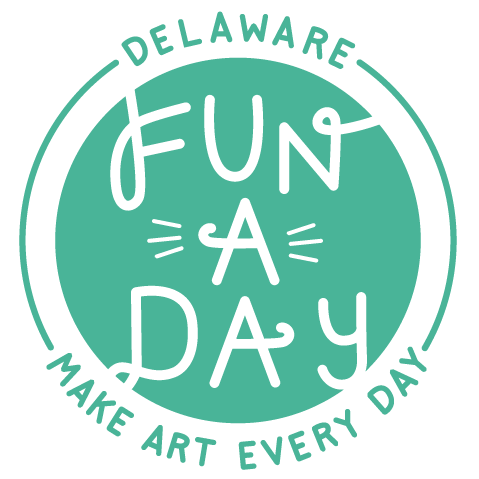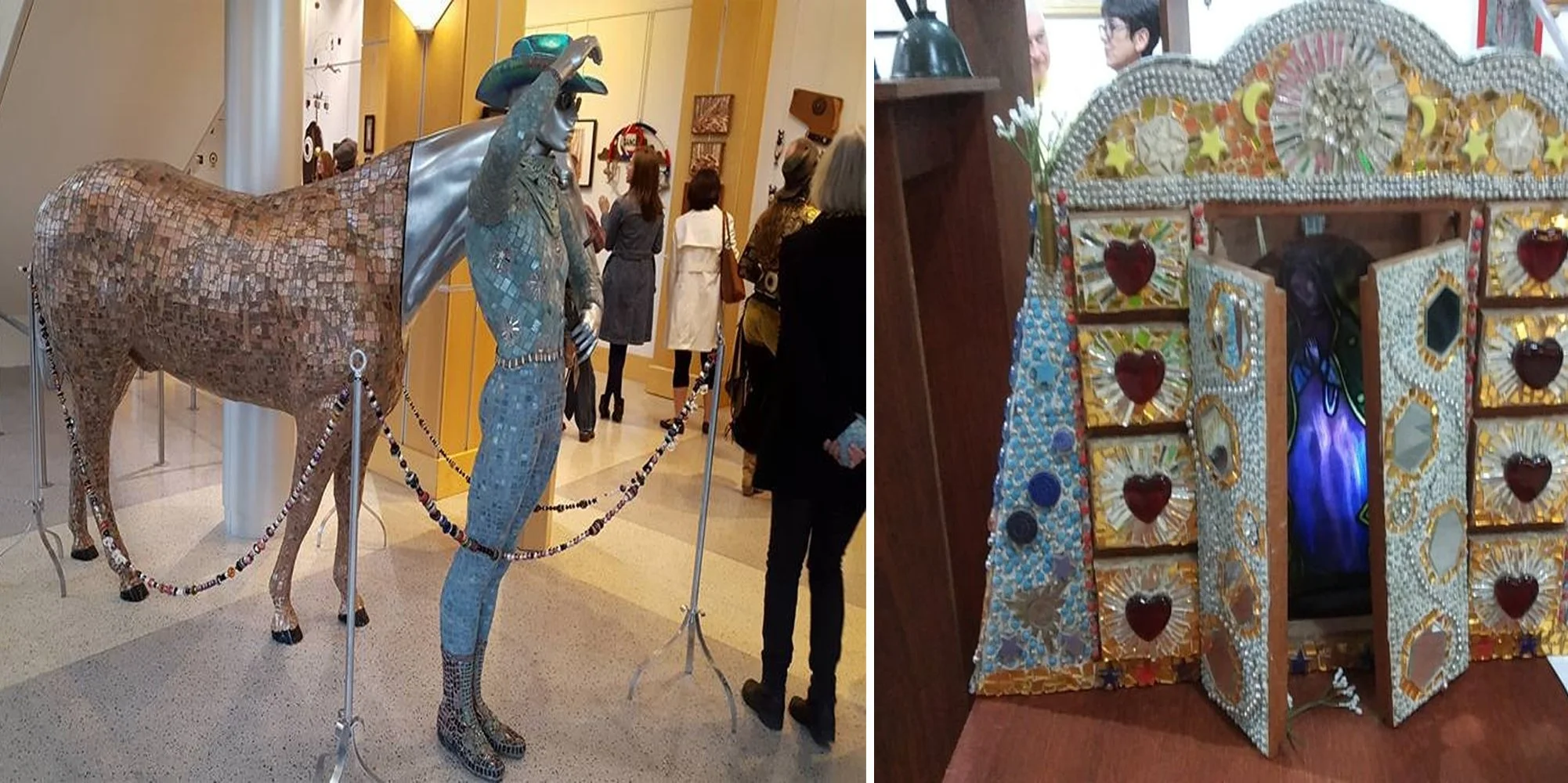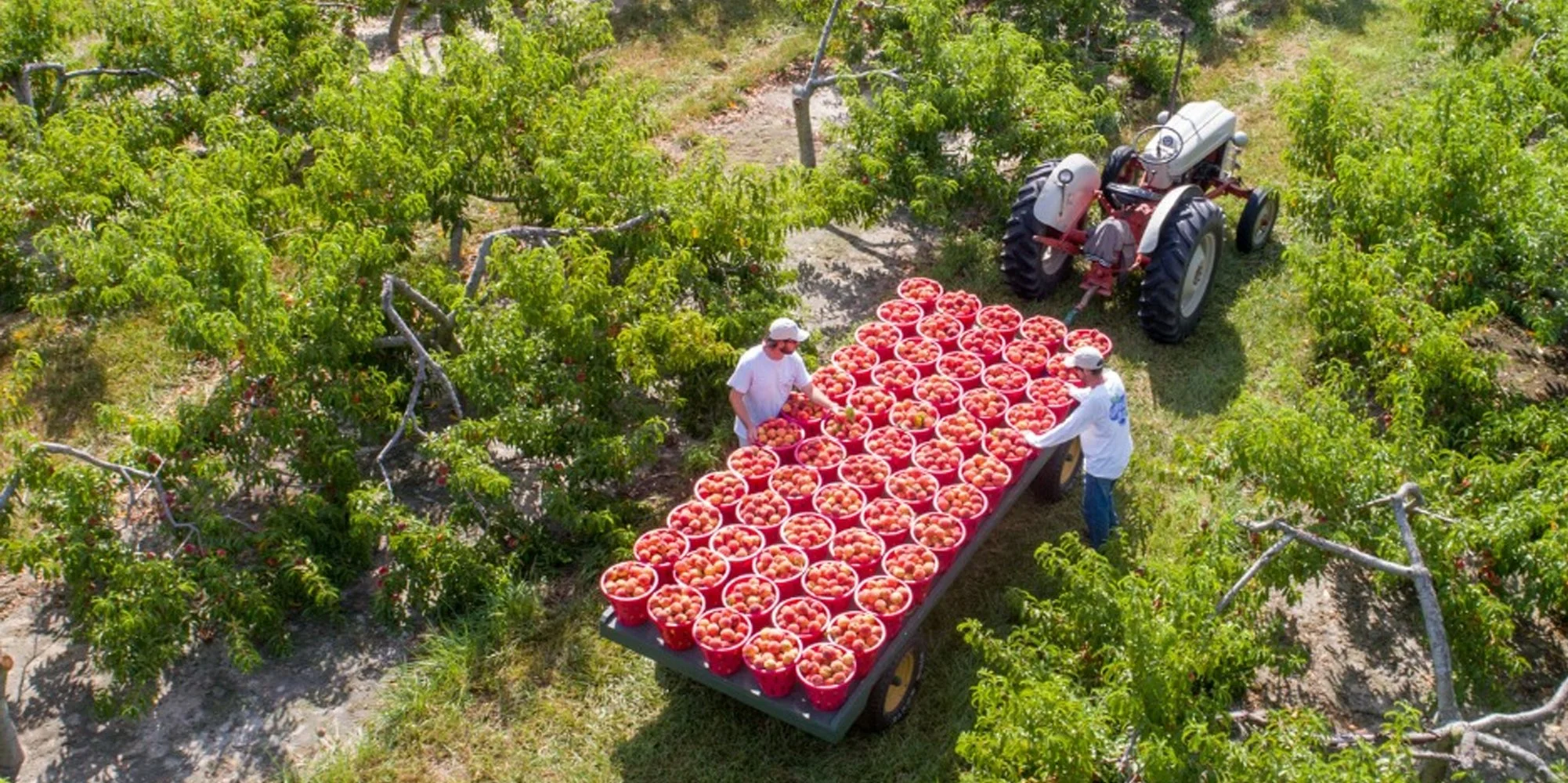For our second interview of the 2025 Delaware Fun-A-Day, we talk to Trebs Thompson about how vision loss and other disabilities have played into her artwork, showcasing artwork in galleries around the local area, and the many initiatives that she takes part in throughout the art community. Thanks, Trebs, for your time and answers!
We like to know how people are connected to Delaware - are you a resident, born and raised? What brought you to Delaware Fun-A-Day (DEFAD)?
I was born in Alabama and grew up in Puerto Rico. I moved to Delaware in 1984 to attend U of D. and fell in love with the area. I was aware of fun-a-day for a few years before I submitted. It took me a while to find my rhythm. I tend to work in bursts, not as a daily discipline.
Your sculptures often incorporate discarded or found materials—how do you choose what speaks to you, and how do you see beauty in what others might overlook?
This will sound a little crazy…but objects talk to me. I hold them in my hands and see something else in them. I once found a mortar shell in a box at goodwill. I was almost driven to my knees with the vision of it as a base for a stained glass lamp base. It took me six years to develop th skills to make what I saw. I also have learned to hold onto boxes of things I know I will like. Broken old jewelry, religious symbols, bullet casings. When I find a piece of junk that speaks to me, I then have a ready stash of objects to work into the vision.
In your triptych stained glass piece, “Losing Sight,” “Taking Flight,” and “Going Dark,” you explore vision loss—how has that experience reshaped your relationship with light, texture, and storytelling?
The triptych was a deeply personal piece with tons of symbology about my journey imbedded in it. It was the first of my pieces where I also began to think about touchable art. Sometime in the next year, I hope to be incorporating QR codes into my work to give audible descriptions as well. I certainly see accessibility, inclusion, and independence in new ways. Losing my vision has changed the way I work. I work under high intensity paddle lights, wearing double strength prescription glasses and working with magnifiers. I tend to work on a larger scale and no longer do detail painting or soldering.
Has your personal identity influenced the evolution of your artwork over the years? If so, in what ways do you feel your experiences, background, or sense of self have shaped the themes, style, or direction of your creative journey?
My artwork is actually very different from my regular personality. I’ve always struggled with how to word it, but I feel like the best way to describe it is that I make the art I wanted to see. I loved the edginess of the majority of cartoons and anime I watched while growing up, but I always had a more cutesy art style. When I formed my art style things like pastel goth weren’t really common so I created what I wish I could have owned and displayed by my desk to inspire my work. This is also why I chose to go under a fake artist name for when I create, since CeCe Renee is such a different person from the real me and so different from what I usually create.
When preparing for an art challenge and show like Delaware Fun-A-Day, many artists have shared that one of the biggest hurdles is just deciding on the idea they want to pursue for their project. This year, when you registered, you had a handful of ideas you were considering, but hadn’t yet settled on one. What helped you make your final decision? What advice would you give other artists about how you navigated the process of narrowing down your ideas and selecting a direction for your piece?
The first struggle was that all of my ideas were too big, both figuratively and literally. I wanted to do characters in alcohol markers since that’s what I usually do, but I knew I would struggle with the size restrictions and the time limit. I instead focused on making the whole piece look like the art instead of the individual pieces. I started with the base, what would I use? I decided on a cork board since the art needs to be ready to hang. Then I asked myself what the board reminded me of and I settled on a detective board. Murder mysteries and forensics have always intrigued me and I thought it would be interesting to make pieces look different scraps of evidence. The advice I would give is do whatever it is that works with your personality and the show’s restrictions and have fun!
Can you share what it was like exhibiting your work at places like the Oxford Arts Alliance, and how those venues influenced or amplified your message?
The Oxford Arts Alliance was the first venue to show my triptych. A reporter from 20/20 magazines drove over a hundred miles to write about my piece, only to find the Alliance closed for bad weather. The Alliance immediately created a video and sent it to her. I have been so blessed to be part of this area. My show as an Arts Fellow for the state of Delaware last year was at the Department for the Visually Impaired. They were amazing, producing braille cards for each of my works, calling and emailing every resident receiving their services to invite them to the show. Every place I have shown my work has been incredibly kind and supportive.
Much of your work is tactile and accessible to visually impaired audiences—was that an intentional shift after your diagnosis, and how do you see art evolving to include a wider range of senses?
It has been a journey for sure. My thinking is evolving as my perception changes. I collaborated with a California artist last year to make a series of panels called “Please Touch the Glass.” We cast common garbage into glass. Many of the visually impaired visitors didn’t get it because the original texture of the item was lost. That in itself was mind-blowing and will cause me to rethink my approach.
Whimsical Farms seems like an extension of your artistic spirit—how does life on the farm, with its heirloom plants and animals, inspire or ground your creative work?
It is a little wild, a little out of control, overly ambitious, and a deep part of the way I plow through life. I love working with my hands, being in touch with the world differently.
You’re part of the Trashy Women, an art collective celebrating recycled materials. What have you learned from creating in community, and how does collaboration fuel your own innovation?
The trashy women have been fantastic. They have been through my cancer, my vision loss, my divorce, and so much more with me. It has been amazing to see each of them grow as artists and friends. I couldn’t ask for a more wonderful group of women. It’s been so much more than just technical support or setting up shows collaboratively. The trashy women encouraged my technical growth as an artist and certainly helped my discipline to create work on a regular basis.
From essays on farm life to performing with the Forgetful Squirrels improv troupe—how do these different creative expressions feed into one another and shape your identity as an artist?
It’s all about telling stories. My life has been so far out of the norm and mainstream that I have a rich body of experiences to draw from. Each of these organizations challenged me in different ways, and I fed on that electricity.
You've spoken and exhibited widely—what’s a dream project or initiative you’d still love to start, especially one that deepens accessibility or champions unconventional art forms?
Some of my goals include getting some of my vision work into eye hospitals or organizations like the National Federation for the Blind. I’d like to take some more classes at Salem Glass College and work on skills for my changing abilities. I’d love a shot at a show at some place like the American Visionary Arts Museum. I’d love to work with other artists with challenges as well.
Anything else you’d like to share or enlighten us with? Where can people buy your artwork, and how can they connect with you?
My next show will be at Gallery 23 in Landsdowne, PA, opening September 12. My website is TrebsThompson.com. I’m easy to find on social media. I love building community and intersecting with interesting people and projects, especially if I have enough lead time to work it into my calendar.





